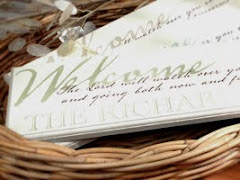
Fairy Gardens are adorable. There is no way around it...There's something about a miniature paradise accompanied by tiny accessories arranged in a little garden box that is irresistible. The really cool thing about these gardens is that although there are plants that have been developed to use in them and there are trimmings recommended by the manufacturer, a Fairy Gardener does not have to be limited to these options. Fairy gardens are limitless opportunities for creativity and fun.

Some of you may be wondering, "What IS a Fairy Garden." A Fairy Garden is a tiny garden meant for imaginary fairies (or simply invisible or shy ones if you're a believer). These gardens are small -- small enough to fit in a gardening box and fit on a coffee table. You can put them outside in warm weather, but for people who live in an apartment or who have no yard and outdoor gardening space, these tiny planters are ideal. Fairy-Gardeners plant tiny plants and arrange
furniture and landscaping items (paths, wheelbarrows, etc.) in the garden to make their "Fairy-Guests" as comfortable as possible. (for more information on Fairy Garden products, please visit
http://www.fairygardening.com/).
Sometimes, however, garden centers might be out of the accessories and plants which are originally made for the Fairy Gardens, or a customer might not like the little elements available to decorate the planters. In either case, Fairy Gardeners can still be happy, creative, and enjoy working with their tiny planters...Here are a few suggestions:
(1) Plants: Plants for your Fairy Garden only have to meet a few simple critera:
(a) They must be small (they have to fit into the tiny plant box)
(b) They must grow slowly (we can't have them outgrowing their planter, can we?)
(c) They must be cute (sorry, uglier plants like skunk cabbage need not apply for residency in a Fairy Garden)...
Here are some suggestions for Fairy Garden Plants:
Ferns
Ivy
Coffee Plants
Podocarpus
Palm (Mini-ones of course)
Cactus Garden
Hens and Chickens (Note: Cacti and Hens and Chickens need a LOT of direct sunlight to stay healthy)...
Once you've planted your fairy garden, you have to think about accessorizing it. Sometimes more creative people can feel limited by decorative items offered in stores, so here are some ideas for thinking outside the box:
- Toy stores (You could find everything from well-made miniature doll furnature for your garden to little trains and tracks ... maybe your fairies like to travel...)
- Craft Stores (You might find some unfinished mini-accessories here that you could decorate in your own way...if your favorite store has a doll-house section, be sure to check out the miniatures they have on sale there)
- Other departments of your garden center (if you want to make a rocky path for your fairies, most garden centers have pebbles and other small rocks for sale -- also be sure to look for things like wood chips and sand.)
In conclusion, Fairy Gardens are an enjoyable way to garden inside your house, while using the whimsical side of your imagination. Although the size of the gardens may seem limiting to some people, they really are a lot of fun. And who knows? Maybe a real fairy will come to live in your Fairy Garden.













